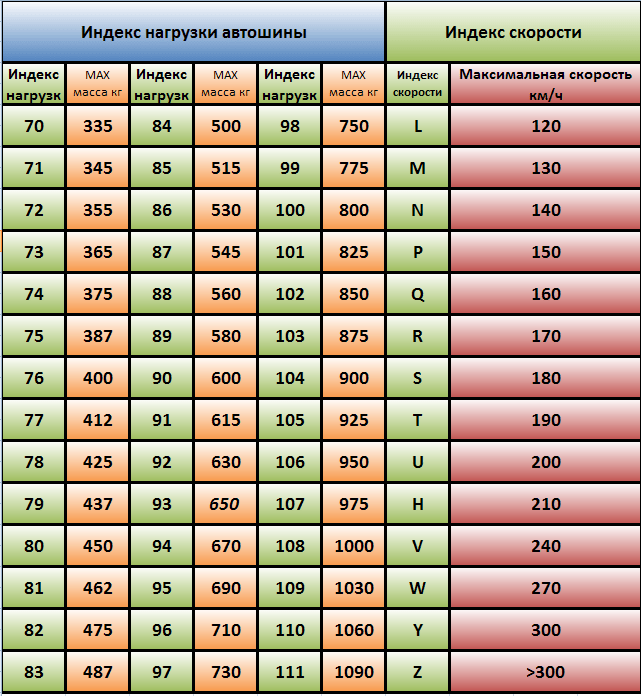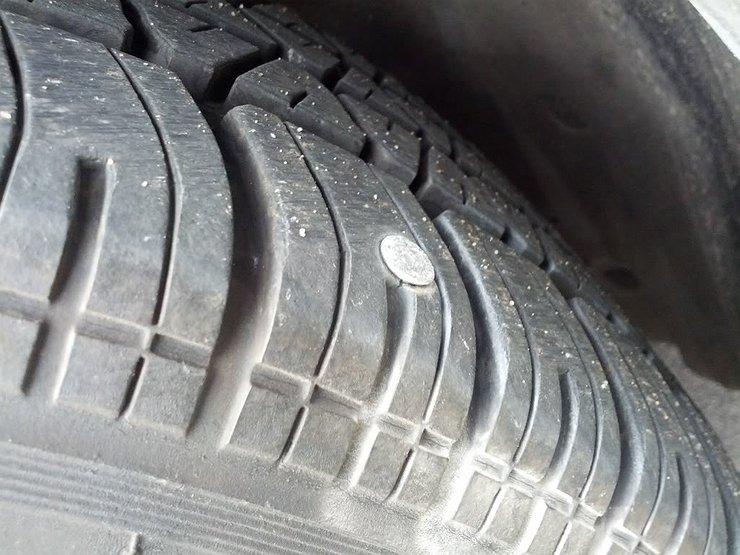
Tire speed and load index
Content
The tire speed and load index are important parameters for motorists, directly interconnected with each other. In the table below they are presented visually, and below they are described in the corresponding sections (which will help to understand the table). Not everyone knows them, but it will be extremely useful to understand what they are in order to properly operate your four-wheeled friend and reduce the risk of accidents to a minimum.
Load index
This is the name of the maximum permissible load on the tire when it moves at the highest speed at a certain pressure in the tire. The calculation is in kilograms.
In short, this value determines how much load the tire can carry at the highest speed.
In this case, not only people and things are taken into account, but also the weight of the transport itself.
There are alternative names, say, load factor, but the above is generally accepted.
In the marks on the bus, the parameter in question is registered immediately after the dimension, for which a number from 0 to 279 is used.

The publicly available above table helps to decrypt.
There is a more complete version of it, but it is in this that most of the tires of passenger cars are included, therefore, more often, to make it easier, they use just it.
According to the standards from ETRO (that is, an international organization that has everything under control), up to 2 load index options are possible in the tire size: simple and increased. And the difference in them should not be more than 10%.
Increased when marking, it must certainly be supplemented with an explanatory inscription, options:
- XL;
- extrareload;
- or Reinforced.
Often, drivers think that a high load index is guaranteed to make a tire large and durable, especially from the sides. But this is a delusion: such a parameter is calculated by completely different checks and has nothing in common with the strength of the tire's sides.
This characteristic is internationally marked almost identically, but if the tire is from an American company, then its decryption is written after the index. Even in America, a reduced index is noted, it is marked with the letter P (stands for passenger) in front of the size. Such a reduced index assumes the highest loads less than the standard ones (but the difference does not exceed 10%), so before using the tires, you should check their documentation and find out if they are suitable for you.
You may also be interested - we recently published a material: tire marking and decoding of their designations... According to this material, you can find out all the parameters of the tire.
Another property of American tires is that this characteristic can be noted for light trucks with pickups, Light Truck. When marking, such tires are indicated by the index LT, through a fraction, the first index is followed by the second. The Goodyear tire of the WRANGLER DURATRAC LT285/70 R17 121/118Q OWL with 2 axles and 4 wheels has an index of 121 (1450 kilograms), and with twin wheels on the rear axle - 118 in 1320 kilograms. A simple calculation reveals that in the second situation, the car can be loaded more than in the first (although the maximum load on one wheel should still be less).
The European tire markings differ only in that the Latin letter C is written on the marking not in front of the standard size, but immediately after it.
Speed index

This is explained even more simply - the highest speed that the tire can withstand. In fact, with her, the company promises that the tire will remain safe and sound. The product is marked with a Latin letter immediately after the load index. It is easier to remember from the table: almost all the letters are placed in alphabetical order.
What can non-compliance with the parameters lead to?
The connection between the parameters under consideration, of course, is taken into account by firms - for the same value of the maximum load, tires are produced with various speed tolerances.
The connection is quite obvious: the greater the maximum speed, the more the tire must carry - because then the load on it increases.
If the characteristics are not met, then even with a relatively small accident, say, a wheel will collapse into a pothole or hole, the tire may burst.
When choosing tires based on the speed index, one should pay attention to the manufacturer's advice, the season and the driving behavior of the driver. If you cannot act in accordance with these recommendations, you should purchase tires with a higher (but not lower) index than specified in the recommended ones.
Questions and answers:
What does the load index mean? The tire load index is the permissible load weight per tire. This concept is measured in kilograms at the maximum permissible speed and pressure for a given tire.
How does the tire load index affect the car? The softness of the car depends on this parameter. The higher the load index, the harder the car will be, and the rumble of the tread will be heard when driving.
What should be the tire load index? It depends on the operating conditions of the car. if the machine often carries heavy loads, then it should be higher. For passenger cars, this parameter is 250-1650 kg.
